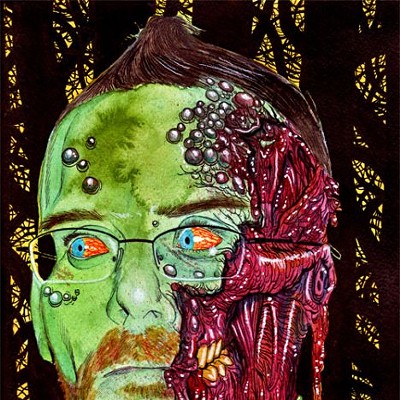At this point in film history, the slasher is firmly entrenched as one of the core horror genres. It’s been around seemingly forever. It’s been refined, perfected, deconstructed and reinvented multiple times. Even casual horror fans have seen enough slasher films to recognize the typical story beats and tropes that the genre shares. But there was a time when this wasn’t the case. A time when no one knew what a “slasher” was, or why they would want to see one. A time before John Carpenter’s Halloween.
There’s a strong argument to be made that Halloween was not, in fact, the first slasher film. There are at least two strong contenders that predate it: Black Christmas and The Texas Chainsaw Massacre, both of which can make compelling cases for being the true “first” slasher. In truth, the slasher genre contains generous dollops of all three films’ DNA, along with touches of plenty of other movies, notably Italian giallo films, any number of the more lurid American police procedural films and, of course, Alfred Hitchcock’s seminal Psycho. But for a number of reasons, Halloween is the film that gave birth to the slasher genre, even if all the rest served as indispensable midwives.
The first innovation Halloween offered, and arguably the most important, was the introduction of the unforgettable killer. From its brutal cold open to the final frames, there is no question that Michael Myers is the one and only star of this stabby show, and putting such an unforgettable character front and center was a keystone concept of the genre to come. Sure, The Texas Chainsaw Massacre had Leatherface, but he was surrounded by a cast of equally fucked up, if slightly less memorable, killers in his maniac murder family. The killer of Black Christmas is largely unseen — menacing enough, but not a trend that was followed in the films that came later — and remained a cipher throughout. The proto-slasher Psycho offered up Norman Bates, who was unforgettable in his own way, but kind of pathetic when you came down to it. Michael Myers? Unforgettable. Monstrous. Terrifying. After Halloween, evil had a name, and a face (or a creepy mask in place of a face, which is even better).
Along similar lines, Halloween gave us a new twist that became de rigueur for our slasher villains: the unkillable killer. Think about it: How many slasher killers in the dozens of films that followed shared this one novel trait? All of the big names did. Most of the small ones, too. Leatherface seemed unstoppable, but it’s not like he was ever really tested, and when he cut himself with his own chainsaw, he was pretty much done. Same with Black Christmas and Psycho — they’re just normal guys, at least as far as your conception of “normal” includes sawing up coeds and random motel guests. Myers, though…he takes a beating in that movie. He’s stabbed with knitting needles and jabbed in the eye with a coat hanger, and gets shot a half-dozen times by his psychiatrist to cap it all off. Each time, it seems he’s down for the count. Each time, he rises to wreak yet more havoc. This became a staple of nearly every other slasher to follow, and Halloween can claim it as a true innovation.
The final, and perhaps most important, piece of our slasher puzzle is the most mundane: Halloween cost very little to make, yet it made a shitload of money. Off a reported budget of roughly $300,000, it went on to make $70 million at the box office — roughly twice what Chainsaw earned off a similar budget, and Black Christmas made just $4 million with twice the budget. It’s no coincidence, then, that it was Halloween that was the first of the three to become a film franchise, with each installment building on the legend of Myers. No doubt it was that earnings potential that got a dozen other slashers green-lit in the wake of its release — that is one hell of a return on investment.
And that’s how you create a genre, kids: a little innovation here and there, and the promise of a big ROI to tempt the execs. It doesn’t hurt that Halloween is a first-rate film that beautifully bridges the gap between the suspenseful thrillers that preceded it and the gory killfests that followed. (In truth, it’s a lot more the former than the latter, apart from those aforementioned innovations.) It holds up well today, even if it’s a lot less bloody and boasts a much smaller body count than you might expect given its reputation and place in history. See it again — or, gods forbid, for the first time — and appreciate all that Halloween did for the beloved slashers to come. Without it, horror wouldn’t be the same unstoppable beast it is today.
See Halloween at 9:30 p.m. Saturday, May 28, at the Sie FilmCenter, 2510 East Colfax Avenue. Tickets are $11, $8 for seniors and $7 for Denver Film Society members. For tickets and more info, visit the Scream Screen: Halloween event page.
[
{
"name": "Air - MediumRectangle - Inline Content - Mobile Display Size",
"component": "12017618",
"insertPoint": "2",
"requiredCountToDisplay": "2"
},{
"name": "Editor Picks",
"component": "17242653",
"insertPoint": "4",
"requiredCountToDisplay": "1"
},{
"name": "Inline Links",
"component": "18838239",
"insertPoint": "8th",
"startingPoint": 8,
"requiredCountToDisplay": "7",
"maxInsertions": 25
},{
"name": "Air - MediumRectangle - Combo - Inline Content",
"component": "17261320",
"insertPoint": "8th",
"startingPoint": 8,
"requiredCountToDisplay": "7",
"maxInsertions": 25
},{
"name": "Inline Links",
"component": "18838239",
"insertPoint": "8th",
"startingPoint": 12,
"requiredCountToDisplay": "11",
"maxInsertions": 25
},{
"name": "Air - Leaderboard Tower - Combo - Inline Content",
"component": "17261321",
"insertPoint": "8th",
"startingPoint": 12,
"requiredCountToDisplay": "11",
"maxInsertions": 25
}
]











